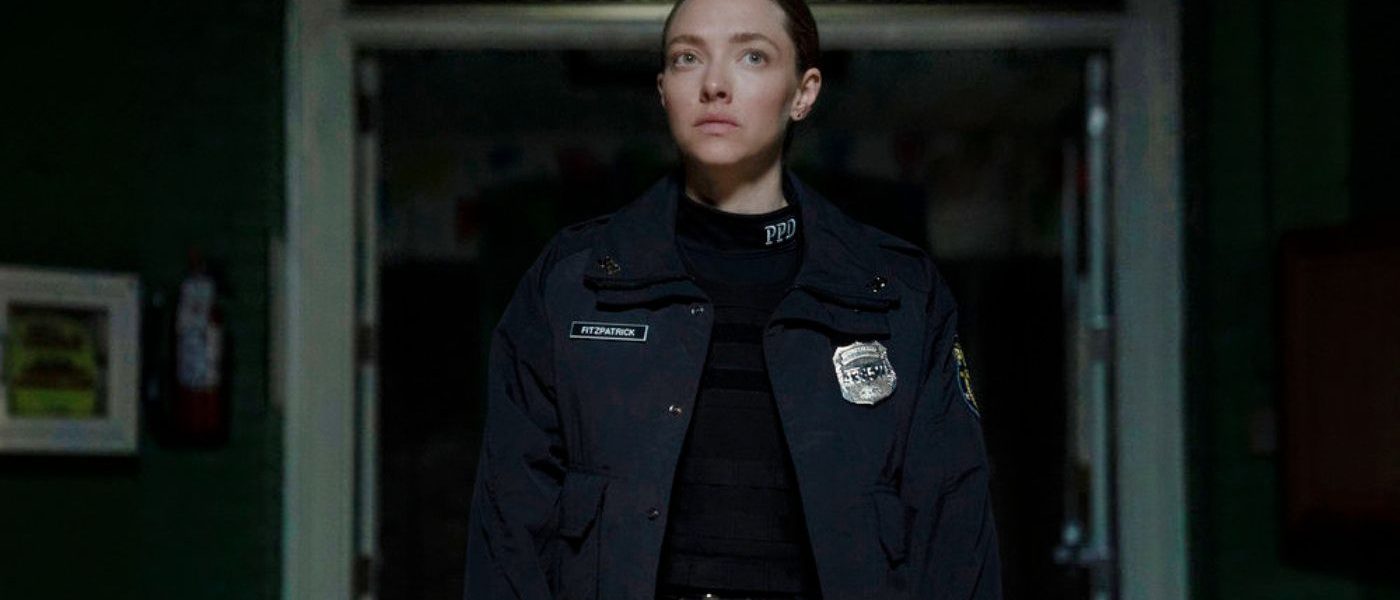Crime thrillers have captivated audiences on television almost since its inception. From emotionally complex detectives chasing down criminals in gritty urban jungles to intuitively sharp investigators exploring quaint, eccentric English villages, the crime genre—both procedural and narrative-focused—has transformed into a consistent favorite for studios, continuously inviting creative reimagining. Despite its oddly reassuring allure, remarkably few series have ventured to examine the pervasive issue of police corruption, particularly the dangerously widespread occurrence within the United States. Even fewer strive to humanize underrepresented and often neglected minority groups: sex workers, those without stable housing, low-income families, individuals battling addiction, and vulnerable young girls who fall prey to those in authority who are meant to protect them.
Peacock’s newest miniseries, Long Bright River, breaks this mold. Adapted from the best-selling and critically acclaimed novel by Liz Moore and brought to the screen by showrunner Nikki Toscano (with Moore collaborating as a co-writer), Long Bright River is deeply rooted in Moore’s personal experiences in Kensington, a Philadelphia neighborhood severely impacted by deindustrialization and gentrification, along with her family’s history with addiction. The series skillfully navigates away from the clichés and propaganda often associated with police procedurals, focusing instead on the communities most affected by Kensington’s economic struggles. This compelling narrative intertwines the ongoing opioid crisis in America with the stark realities of class disparities and boldly challenges the harmful white savior trope, all while delivering a moving love story between two estranged sisters.
Discover the Intriguing Plot of ‘Long Bright River’
Every day, police officer Mickey Fitzpatrick (Amanda Seyfried) patrols the streets of Kensington. Although her quiet nature and love for music seem out of place in her role, her job allows her to drop off and pick up her eight-year-old son, Thomas (Callum Vinson), from one of Kensington’s better schools—the same school Mickey can no longer afford due to the sudden cessation of child support from Thomas’ absent father, which has drastically affected their finances.
Kensington itself is in a state of disarray. The streets where Mickey once played as a child are now ravaged by the devastating impacts of opioids and poverty. Vital resources are in short supply, leaving both businesses and individuals struggling to get by. However, unlike most of her male colleagues, Mickey has taken the time to learn the names of every sex worker she encounters on her patrols. Some she knows from her school days, while others she recognizes solely because she chooses to view them as human beings deserving of compassion. The police department’s troubling attitude toward those they are meant to serve becomes starkly evident when Mickey uncovers that a potential serial killer is targeting sex workers. Neither her superiors nor her colleagues show any interest in investigating the growing number of suspicious deaths, dismissing these women as mere statistics in a string of overdoses.
For Mickey, the investigation turns personal when she learns that her younger sister, Kacey (Ashleigh Cummings), has gone missing around the same time the murders began. The Fitzpatrick sisters had made a pact to always protect each other, but Kacey’s struggles with addiction have driven a wedge between them. Now, Mickey, typically the model officer, risks everything to find Kacey and uncover the identity of the person—or persons—targeting vulnerable members of the sex worker community. Joining her in this perilous quest is her former partner, Truman Dawes (Nicholas Pinnock), who is still recovering from an incident that weighs heavily on both of them.
‘Long Bright River’ Approaches Substance Abuse with Sensitivity and Insight
In Long Bright River, the narrative serves a dual purpose, functioning as both a poignant family saga and a thrilling socio-economic commentary. The estranged relationship between Mickey and Kacey becomes the emotional backbone of the series; since their childhood spent under the care of their strict grandfather (John Doman), Mickey has always been on edge, consumed by worry for Kacey’s well-being. This relentless concern fuels Mickey’s fight against systemic injustices towards minority communities, the discriminatory justice system, and her own haunting past—much of which is embodied in Kacey.
This sibling-centric storyline allows Long Bright River to confront the harrowing reality of loving someone grappling with addiction. Moore poses difficult, thought-provoking questions: how much patience should one extend to a loved one who repeatedly relapses, and when is it necessary to establish boundaries for personal well-being? These questions linger as we consider whether such limits even exist. There’s only so much of ourselves we can invest in a relentless cycle of pain before we reach a breaking point. Moreover, when we grieve for our suffering loved ones, we must ask ourselves—are our feelings of anger and disappointment misplaced? They are struggling, often without the support and resources necessary to survive.
‘Long Bright River’ Dares to Address Police Corruption Head-On
In the world of Long Bright River, police forces often fail to deliver the crucial, life-saving resources that the communities they serve desperately need. While Mickey and Truman aspire to represent “good cops” in a sea of corruption, their efforts are rendered futile in an institution that systematically oppresses minorities and perpetuates white supremacy. This corruption trickles down from the top like oil, making it nearly impossible for two well-intentioned officers to dismantle or redeem a system rife with racial violence, exploitation of the vulnerable, and a gross abuse of power.

Related
10 Must-Watch Shows for Fans of ‘The Silence of the Lambs’
What did you see on TV, Clarice, what did you see?
In line with its themes, Long Bright River effectively challenges the harmful white savior narrative. Mickey, as a police officer, does not need to be a rescuer because the sex worker community is shown to be capable of protecting itself while maintaining its dignity and autonomy. However, when Mickey takes the time to acknowledge the names of the victims, it carries significant weight, especially given that few others do. These women did not choose to end up in their situations; they are not mere statistics but individuals with shattered dreams and limited options. Even if they appear to have made choices, they deserve compassion. The supporting characters in Long Bright River are integral to Kensington’s fabric and are not merely victimized figures; their struggles reflect the harsh reality of societal abandonment.
Despite its strengths, one notable shortcoming of the series (which comprises eight episodes available for review) is the absence of diverse voices from the Black and POC communities. Pinnock shines as Truman, contributing a phenomenal, empathetic presence. However, when it comes to issues directly affecting the daily lives of Black individuals and people of color, Long Bright River falls short in offering their perspectives. The narrative is largely centered around Mickey, a white woman, which serves to deconstruct the white knight archetype, but the lack of more diverse representation remains a significant oversight.
Amanda Seyfried Delivers a Captivating Performance in ‘Long Bright River’
Long Bright River showcases a directorial approach that revitalizes the moody prestige TV aesthetic, infusing it with a sense of raw realism. Kensington is vividly depicted through naturalistic lighting and authentic set designs; the afternoon sun casts a warm glow over the dilapidated buildings and litter-strewn streets, while the warmly lit interiors provide a stark contrast to the series’ grimmer themes. The narrative unfolds during the winter holiday season, with strings of colorful Christmas lights lending an inviting aura amidst the harsh realities faced by the characters. Overall, Kensington emerges as a character in its own right—melancholic, desolate, yet not devoid of warmth, reflecting Philadelphia’s rich cultural history, including the Mummers, murals, and enduring small businesses amid widespread inequality.
The success of Long Bright River hinges significantly on Seyfried’s performance, which may well earn her a second Emmy. Her powerful portrayal grounds the narrative while also casting a shadow over it, much like a storm cloud. The depth of Mickey’s internal struggles is reflected in her eyes, revealing layers of unspoken regret, heartbreak, and weariness. It’s impossible to look away from her, lest we miss a glimpse of her true self or the subtle nuances in Seyfried’s physicality. The chemistry between Seyfried and Vinson is remarkable, with Vinson striking a perfect balance between Thomas’ youthful innocence and his deep empathy for his mother. Pinnock’s performance is equally compelling, and his chemistry with Seyfried adds an emotional layer that will resonate with viewers. Cummings delivers an outstanding performance, skillfully embodying Kacey’s battles with addiction while also showcasing her resilient spirit.
Long Bright River represents a significant shift in the crime genre that deserves emulation. It’s a gripping thriller and a heartfelt family drama that achieves its ambitious goals, despite lacking certain crucial viewpoints. The perspectives it does present are treated with empathy and without judgment, a philosophy that should be the norm rather than an exception.
All eight episodes of Long Bright River debut on March 13 on Peacock.








